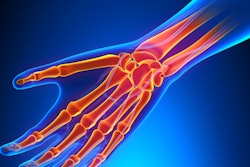Dear AuntMinnieEurope CT Insider,
Photon-counting CT (PCCT) is continuing to show great promise, and an increasing number of researchers are lauding the technology's ability to produce high-quality images at lower radiation doses compared to conventional CT exams.
In this month's newsletter, we're highlighting a study conducted by a Dutch team that found PCCT boosted the sharpness of wrist images at 50% less dose -- a result that underscores PCCT's promise for musculoskeletal indications. Find out more in today's top article.
Also, please take a look at our coverage on a variety of CT research findings, including a German study that shows how PCCT pulmonary angiography imaging outperforms conventional CT for diagnosing pulmonary embolism, and Belgian research that elaborates on the particular CT findings that correlate with histologic data and identify early interstitial lung abnormalities.
When it comes to illicit drug use and addiction, CT now plays a central role in diagnosing and managing the wide range of serious complications. Two experienced clinical radiologists from Australia have spoken about how they approach this area. They've also provided details and clinical images about some of the many cases they've encountered over recent years.
In another article posted recently, you can read about what a Polish team has found out about dual-energy CT's (DECT) performance for assessing angiogenesis of lesions resulting from solitary lung nodules.
The optimum use of CT depends critically on the skills and actions of the radiology workforce. In a new opinion piece, interventional radiologist Dr. Chris Hammond has voiced deep concerns about the lack of motivation among National Health Service (NHS) staff, and he is convinced the NHS must learn from the Apple experience of the 1980s.
CT is a powerful and versatile imaging technology. We invite you to keep current on its many uses by regularly visiting our CT Community. If you have CT topics you'd like us to consider, please contact me.




















